SBOK092 December 2024 OPA4H199-SP
- 1
- 2
- Trademarks
- 1 Introduction
- 2 Single-Event Effects (SEE)
- 3 Device and Test Board Information
- 4 Irradiation Facility and Setup
- 5 Depth, Range, and LETEFF Calculation
- 6 Test Setup and Procedures
- 7 Destructive Single-Event Effects (DSEE)
- 8 Single-Event Transients (SET)
- 9 Event Rate Calculations
- 10Summary
- A Total Ionizing Dose from SEE Experiments
- B References
7.1 Single-Event Latch-up (SEL) Results
All SEL characterizations were performed with forced hot air to maintain the die temperature at 125°C during the tests. The temperature of the die was verified using thermal camera prior to exposure to heavy ions.
The device was exposed to a Praseodymium (Pr) heavy-ion beam incident on the die surface at 0°. The distance between the device and the beam was adjusted to achieve an effective LET of 65MeV-cm2/mg. A flux of 105 ions/cm2 -s and fluence of 107 ions/cm2 per run was used in all runs. The device was powered with voltage of 40V.
Run duration to achieve this fluence was approximately ninety seconds. The four devices were powered up and exposed to the heavy-ions using the maximum recommended supply voltage of 40V. The device was configured as a buffer amplifier, with the output connected to the inverting input, and the common-mode voltage was set to 40V, which is the maximum recommended input voltage. No SEL events were observed during all four runs, indicating that the OPA4H199-SP is SEL-free up to 65MeV × cm2/mg. Table 8-3 shows the SEL test conditions and results.
| Run # | Unit # | Ion | LETEFF (MeV × cm2/mg) | Flux (ions × cm2/mg) | Fluence (Number ions) | Temperature (°C) | Distance (mm) | SEL (# Events) |
|---|---|---|---|---|---|---|---|---|
| 23 | 8 | 141Pr | 65 | 1.21× 105 | 0.99 x 107 | 125 | 50 | 0 |
| 24 | 8 | 141Pr | 65 | 1.24 × 105 | 5.06 x 106 | 125 | 50 | 0 |
| 25 | 9 | 141Pr | 65 | 1.23 × 105 | 1 × 107 | 125 | 50 | 0 |
| 26 | 9 | 141Pr | 65 | 1.22 × 105 | 4.96 x 10 | 125 | 50 | 0 |
| 27 | 10 | 141Pr | 65 | 1.23 × 105 | 1 × 107 | 125 | 50 | 0 |
| 28 | 10 | 141Pr | 65 | 1.25 × 105 | 5.01 x 106 | 125 | 50 | 0 |
Using the MFTF method shown in Single-Event Effects (SEE) Confidence Interval Calculations and combining (or summing) the fluences of the four runs at 125°C (4 × 107), the upper-bound cross-section (using a 95% confidence level) is calculated as: σSEL ≤ 9.22 × 10-8 cm2/ device for LETEFF = 65MeV × cm2/ mg and T = 125°C.
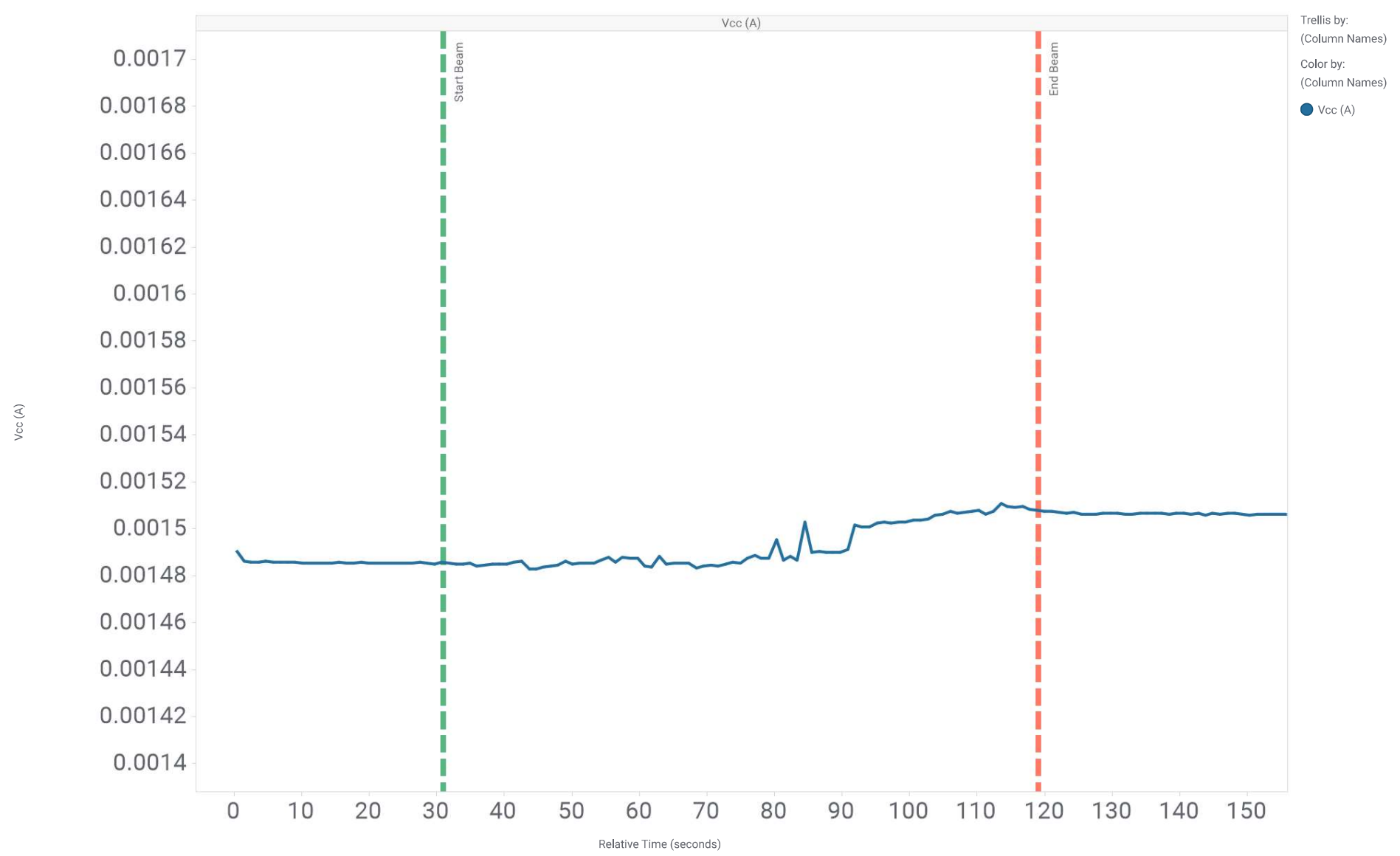 Figure 7-1 SEL Quiescent Current versus
Time for Unit #8 of OPA4H199-SP LETEFF = 65MeV × cm2/ mg
and Fluence = 1 x 107
Figure 7-1 SEL Quiescent Current versus
Time for Unit #8 of OPA4H199-SP LETEFF = 65MeV × cm2/ mg
and Fluence = 1 x 107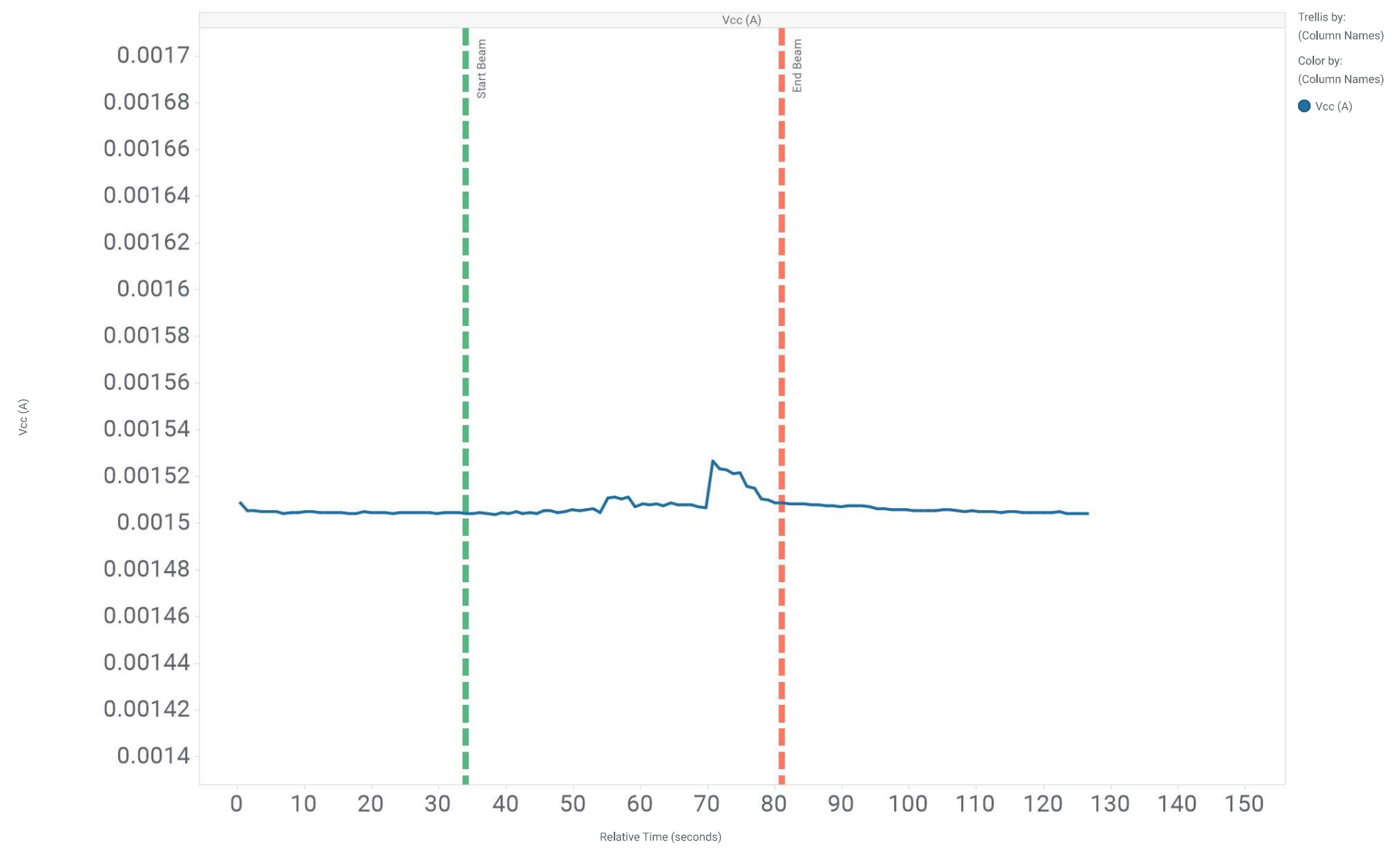 Figure 7-2 SEL Quiescent Current versus
Time for Unit #8 of OPA4H199-SP LETEFF = 65MeV × cm2/ mg
and Fluence = 5 x 106
Figure 7-2 SEL Quiescent Current versus
Time for Unit #8 of OPA4H199-SP LETEFF = 65MeV × cm2/ mg
and Fluence = 5 x 106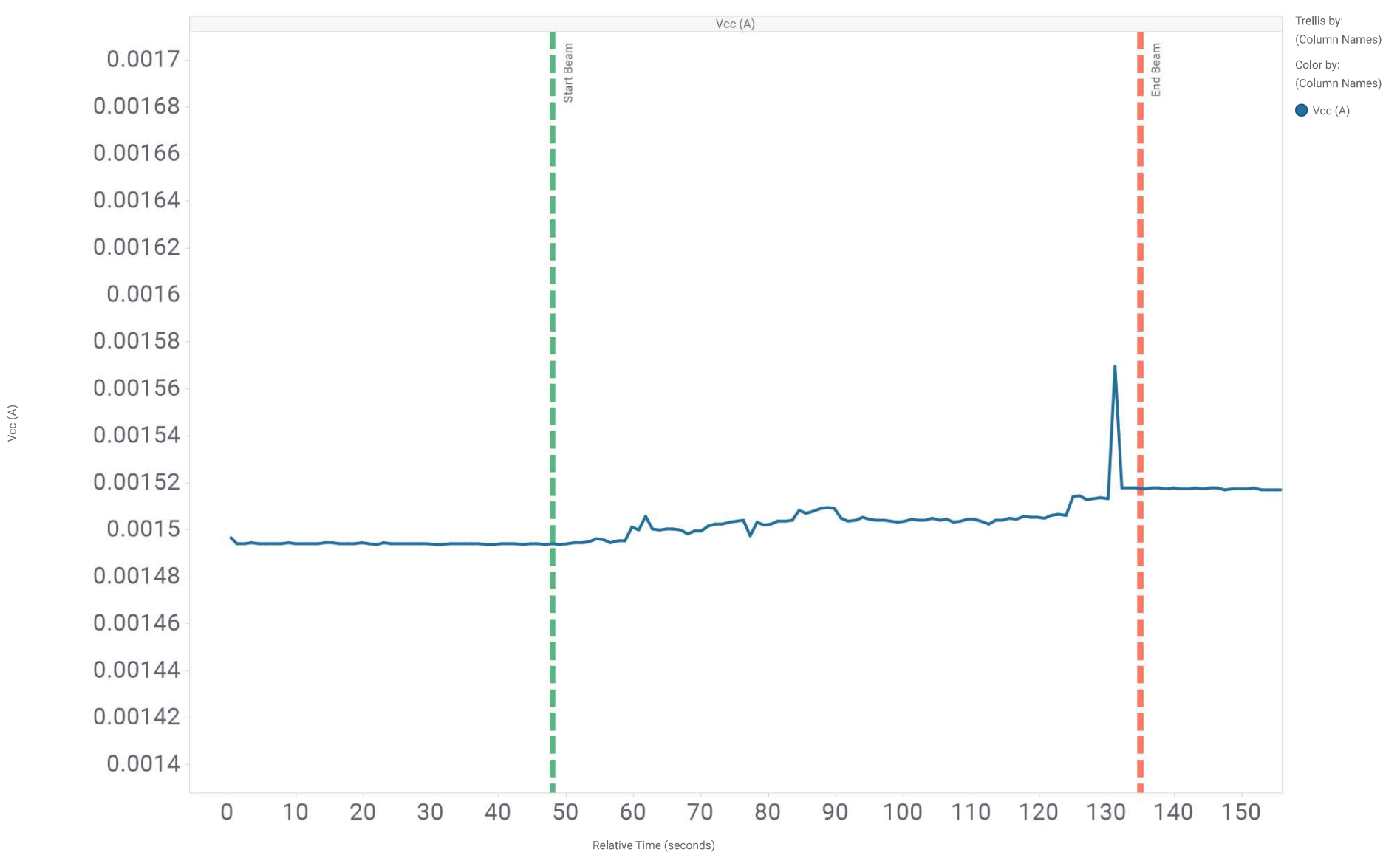 Figure 7-3 SEL Quiescent Current versus
Time for Unit #9 of OPA4H199-SP LETEFF = 65MeV × cm2/ mg
and Fluence = 1 x 107
Figure 7-3 SEL Quiescent Current versus
Time for Unit #9 of OPA4H199-SP LETEFF = 65MeV × cm2/ mg
and Fluence = 1 x 107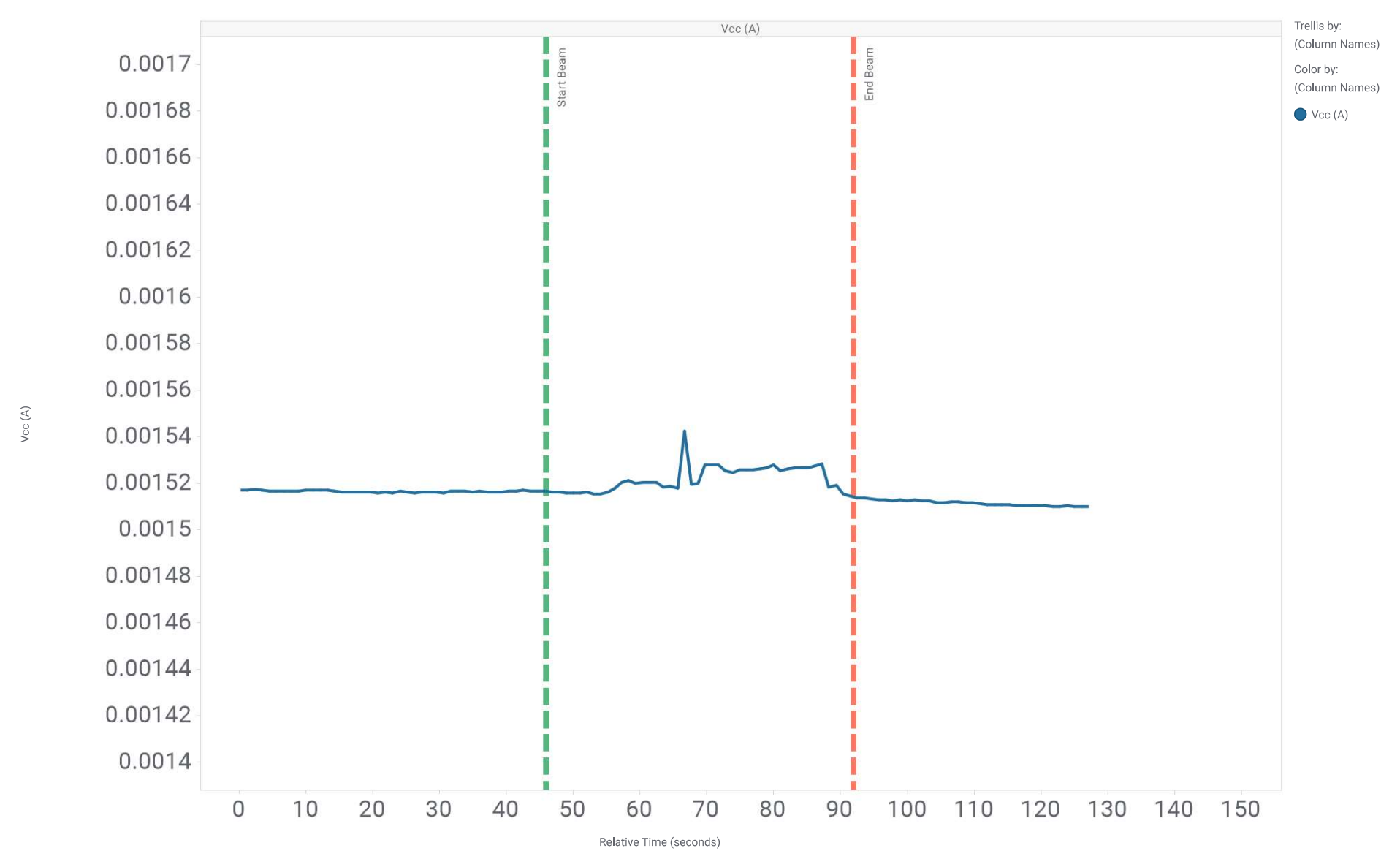 Figure 7-4 SEL Quiescent Current versus
Time for Unit #9 of OPA4H199-SP LETEFF = 65MeV × cm2/ mg
and Fluence = 5 x 106
Figure 7-4 SEL Quiescent Current versus
Time for Unit #9 of OPA4H199-SP LETEFF = 65MeV × cm2/ mg
and Fluence = 5 x 106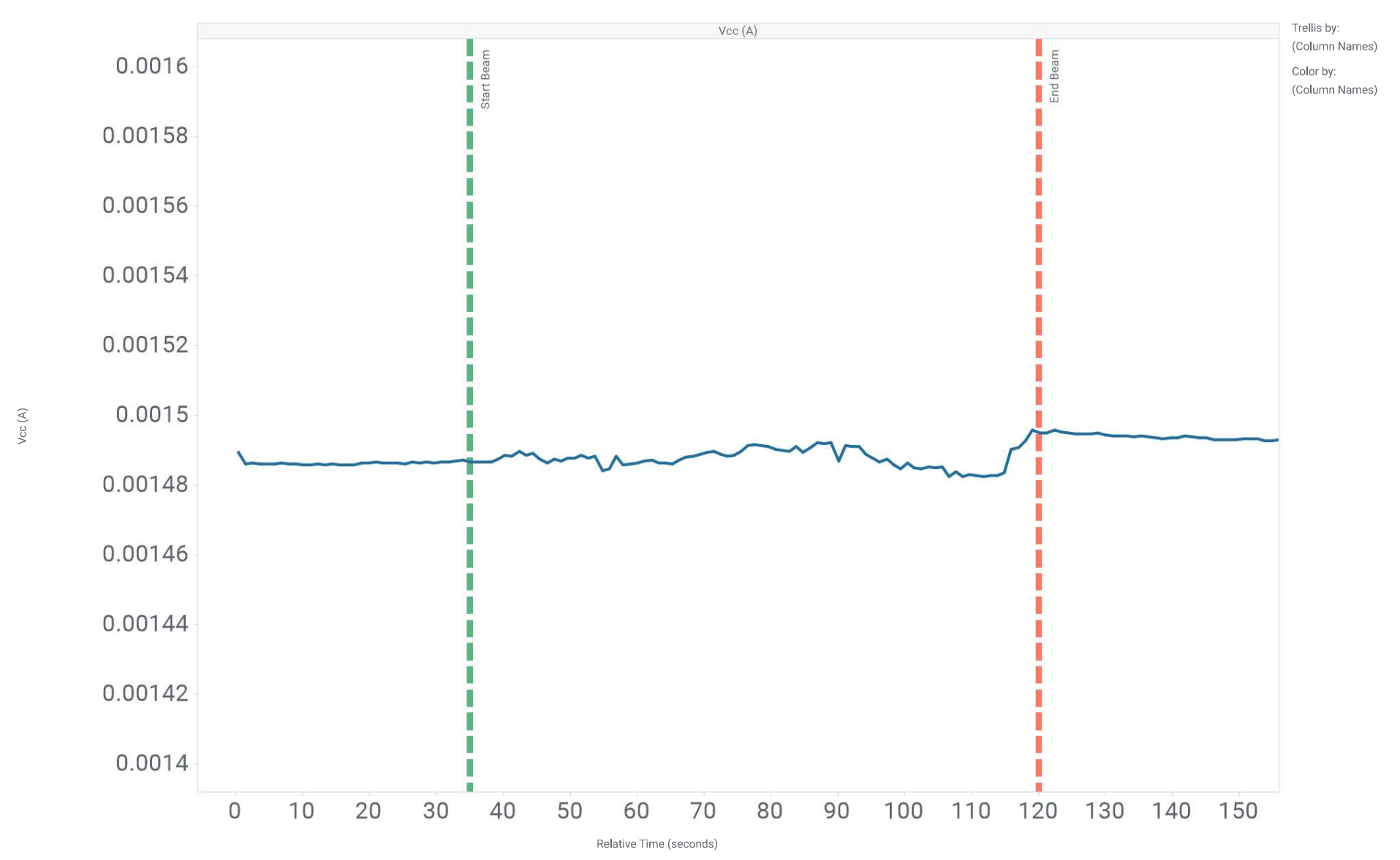 Figure 7-5 SEL Quiescent Current versus
Time for Unit #10 of OPA4H199-SP LETEFF = 65MeV × cm2/ mg
and Fluence = 1 x 107
Figure 7-5 SEL Quiescent Current versus
Time for Unit #10 of OPA4H199-SP LETEFF = 65MeV × cm2/ mg
and Fluence = 1 x 107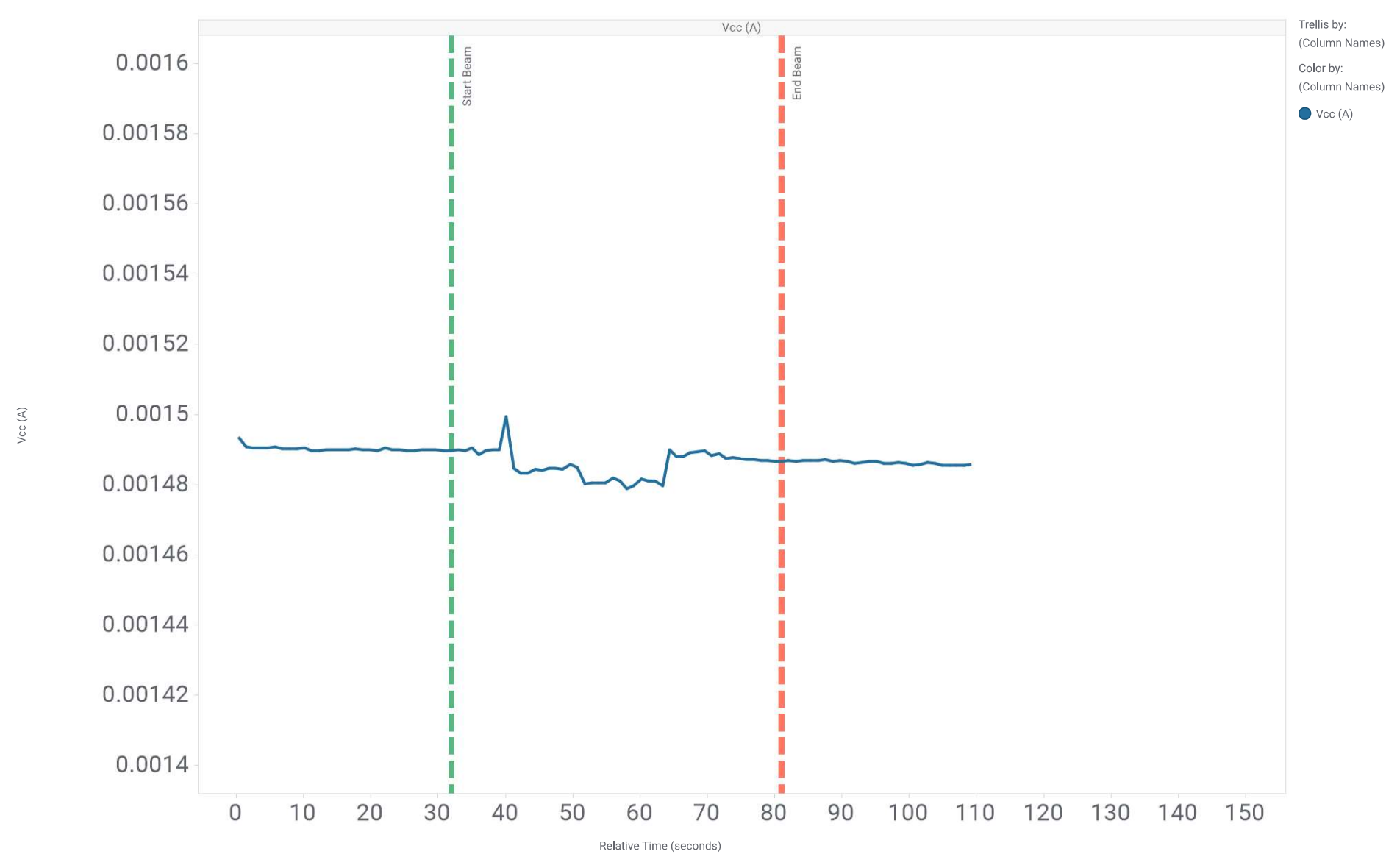 Figure 7-6 SEL Quiescent Current versus
Time for Unit #10 of OPA4H199-SP LETEFF = 65MeV × cm2/ mg
and Fluence = 5 x 106
Figure 7-6 SEL Quiescent Current versus
Time for Unit #10 of OPA4H199-SP LETEFF = 65MeV × cm2/ mg
and Fluence = 5 x 106